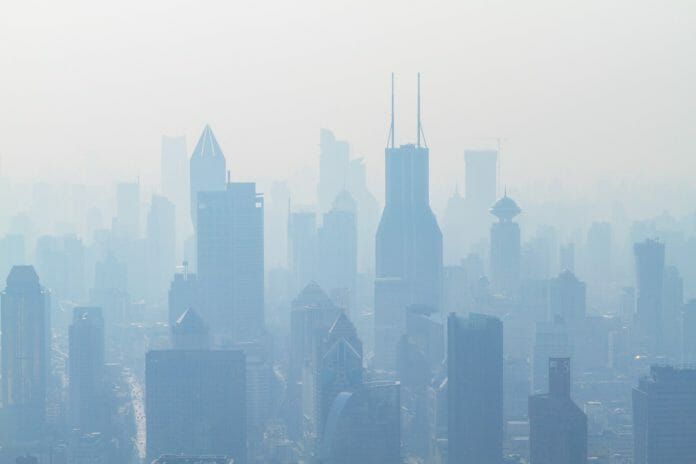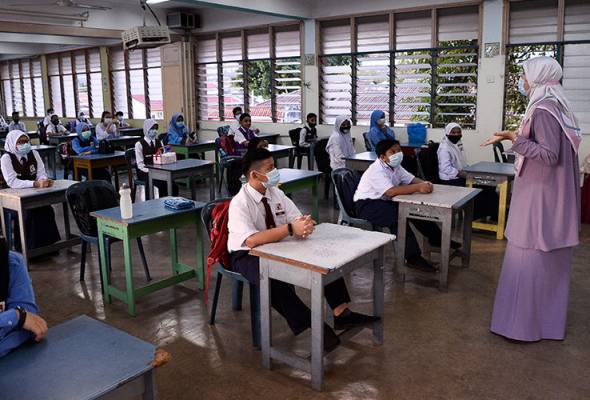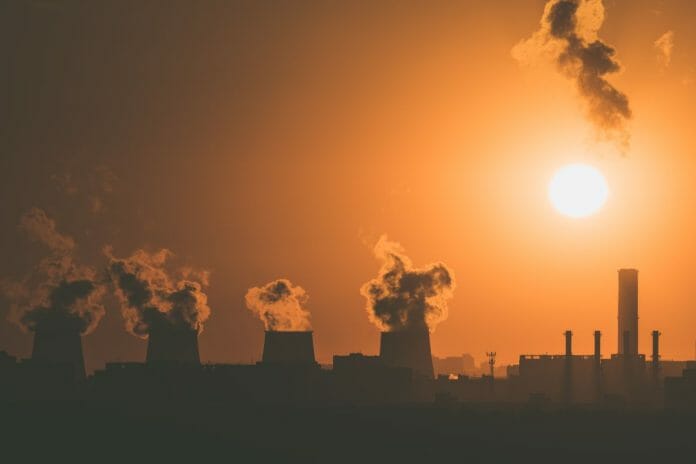
Published by CodeBlue, BusinessToday, The Malaysian Insight & AstroAwani, images by BusinessToday.
Particulate matter, also known as particle pollution, refers to both solid particles and droplets found in the air such as dust, dirt, and even soot (“Particulate Matter Basics”, United States Environmental Protection Agency, 2022). In the short-term, exposure to particulate matter results in eye, nose, and throat irritation, coughing, and shortness of breath. In the long-term, it’s been linked to premature deaths in people with heart or lung disease, irregular heartbeat, and decreased lung function (“Health and Environmental Effects of Particulate Matter”, United States Environmental Protection Agency, 2022).
In Malaysia, an estimated 32,000 people die as a result of ambient air pollution or outdoor air pollution every year (“The Health & Economic Impacts of Ambient Air Quality in Malaysia”, Centre for Research on Energy and Clean Air, 2022). Malaysia’s daily air quality index (AQI) averaged at 66 in 2021, with particulate matter concentrations 3.9 times the WHO recommendation (“Air quality in Malaysia”, IQAir, 2023).
Contrastingly, on January 26, 2023, the state of Sabah has an AQI of 24 whilst Selangor’s is 104, being the most air-polluted state of Malaysia.
With traffic returning to pre-pandemic levels as the streets become flooded with vehicles, the air quality is about to get drastically poorer, and it’s from an object even more widespread than cars: tyres. As the number of vehicles officially outnumber people in Malaysia at 33.3 million registered vehicles, the number of tyres are, at the very least, quadrupled that amount.

Figure 1:
Source: Emissions Analytics
Though there has been plenty of policy focus on carbon emissions from car exhausts, the everyday wear and tear of running tyres pose a severe threat to environmental and public health as well.
New tyres produce around 73 milligrams of particles per kilometre of driving, which is 16 times more than the legal limit for exhaust at 4.5. At present, there’re no legal limits or regulations on particulate matter emissions by tyres in Malaysia.
Furthermore, as the particulate matter produced by tyres are down to 23 nanometres in size (0.023 micrometres or microns), they’re not only invisible to the naked eye but also extremely difficult to measure and are not currently regulated even in the US or EU (“Car tyres produce vastly more particle pollution than exhausts, tests show”, The Guardian, June 03, 2022).
Worryingly, synthetic rubber used to make tyres are derived from petroleum which contains hundreds of potentially carcinogenic chemicals (“Petroleum Carcinogenicity and Aerodigestive Tract: In Context of Developing Nations”, Khanna S., Cureus, Vol. 9, Issue 4, 2017).
The key carcinogen found in petroleum-based products are polycyclic aromatic hydrocarbons (PAHs) – detected in the atmosphere, precipitation (i.e., the formation of liquid or frozen water), urban surface dust, sediment, and soil.
Nanometres of 23 – the size of the particulate matter produced from the wear and tear of tyres on the road – can not only penetrate deep into the lungs and the bloodstream but also our organs.
This poses a significant threat to our health as we go about our everyday lives unknowingly breathing in nano-sized toxins into our bodies.
These particulates don’t just remain in the air.
As these particles get carried by the wind, they seep into our rivers, rain, agricultural soils, and eventually, the food we eat. This is the concept of “runoff pollution” where contaminants get picked up by rainwater and consequently pollute the water supply (“Point Source vs Nonpoint Source Pollution”, Water Education Foundation, 2023).
This is a form of non-point source pollution, which is a combination of pollutants accumulated over a large area. This is unlike point-source pollution which comes from a single place such as a power plant or a factory which is comparatively easier to identify and regulate. Researchers at the Centre for Microbiology and Environmental Systems Science (CMESS) at the University of Vienna did an investigation into whether particulate matter from tyre wear could get into the vegetables we eat.
The results showed that not only did the vegetables absorb the chemicals, it’s also found that these particulate matter ended up remaining in aquatic systems for long periods of time (“Toxic Additives From Tire Wear Could Be Ending Up on Our Plates”, Technology Networks Applied Sciences, January 05, 2023).
Now, the health consequences of tyre pollution are twofold.
Besides the adverse health impacts of PAHs on humans via contaminated food and polluted air, there’s another compound found in tyres that’s been proven deadly to marine life.
The commonly used tyre additive – 6PPD-quinone – had been found to be the reason behind mass salmon deaths in the US. The same compound was also discovered in Australia (“Chemical from tyres linked to mass salmon deaths in US found in Australia for first time”, The Guardian, March 20, 2022).
Researchers in Australia have also found that concentrations of this compound in their rivers peak after periods of heavy storms and have been proven toxic to certain species of trout.
We may be at risk of a similar situation with regards to our own fish stock and aquaculture if we aren’t careful in controlling tyre pollution.
Recall that in fact, the 2019 Sungai Kim Kim river pollution in Johor was attributed to pyrolysis, i.e., the process of burning old tyres to make low-grade oil or fuel oil – as a subset of marine oil that was identified by environmental officials to be the chemical waste found in the riverbed (waterborne) which was also released into the atmosphere (airborne) as a result of not disposed properly/correctly. The flammable methane and benzene fumes emitted from the marine oil contained a cocktail of other toxic gases such, acrolein, acrylonitrile, chloride, hydrogen, toulene, xylene, etc.
Whilst there are ample provisions under the Environmental Quality Act (1974) for prosecuting the offenders of the Sungai Kim Kim pollution and the concomitant of the areas’ air pollution, particulate emissions from tyres on the road have been neglected and overlooked.
The Environmental Quality (Clean Air) Regulations (2014) under the Environmental Quality Act (1974), for example, need to be updated to incorporate and enforce quality control for the particulate matter which emits from tyres. Perhaps what could be done is for a specific schedule under the 2014 Regulations to be enforced in the long-term – during which a transitional period would kick in on a specified date to be determined.
In the long-term, electric vehicles (EVs) would be at the forefront of the agenda as a promising alternative in tandem with the development of green/clean tyres – ideally as in lock-step.
This is especially so as EV tyres wear 20% faster than that of petrol-fuelled vehicles – resulting in more tyre pollution being created.
As such, the fundamental issue at hand is that of the tyre’s composition of synthetic rubber.
Exporting RM883.2 million worth of tyre products in the first half of 2022, Malaysia is home to several tyre manufacturers and even its own brand of epoxidised natural rubber (ENR) known as Ekoprena. Boasting a negative carbon footprint, Ekoprena rubber is sustainable, renewable, and non-petroleum derived.
However, tyres made of synthetic rubber (petroleum-derived) are still the norm and “green tyres” have yet to enjoy widespread commercialisation.
More incentives are needed in this niche-industry to propel the development and manufacturing of green tyres made from sustainable and eco-friendly materials.
As the EV market has a CAGR of 21.7% (vs CAGR -2.9% of gasoline cars), Malaysia could very well position itself to be a leading manufacturer and supplier of green tyres for EVs.
The US is one of Malaysia’s top tyre importers at RM403.3 million (“Room For Malaysian Tyre Industry To Grow; MRC”, Business Today, September 2, 2022).
In light of President Biden’s climate plan, this signals prospective demand for green tyres in the coming years. To “drive” the green tyre industry forward and curb the issue of particle pollution, the government should look into rolling out special grants for further research and development (R&D) into green tyres.
And hopefully, the Malaysia-Singapore Green Economy Agreement (“Singapore, Malaysia sign agreements to deepen cooperation in digital, green economy”, The Strait Times, January 30, 2023) will serve as a basis for future strategic collaboration in the joint-development of green tyres, among others.
Until then, available waste-removal technologies should be utilised in purifying our fishery waters from any toxins and chemicals that have made their way in via nonpoint sources (see, “EMIR Research’s article titled “Pharmaceutical pollution and eco-toxicity – an “emerging” ecological threat”).
At the same time, with air quality in Malaysia subject to the vagaries of seasonal variations, the daily AQI figures should be readily accessible by the Ministry of Natural Resources, Environment and Climate Change and the Department of Environment (DOE) on their social media – Twitter, Facebook, Instagram and even LinkedIn.
As the general population becomes increasingly aware of the “invisible” toxins they breathe in on a daily basis, high efficiency particulate air (HEPA) purifiers may be further encouraged in homes, offices, and communal spaces.
As we move towards carbon-neutrality and net zero, the issue of tyre pollution could one day fade into the past.
In the meantime, we should be looking into the micro-level and specific areas also – going beyond the macro-dimension of low (and ultra-low) carbon emissions generated from exhaust pipes of vehicles alongside air pollutants from industrial activities, etc.
Tyres on the road is one such definitive and critical micro-level area for our policy attention – which fits well into our position as a leading tyre manufacturer (and exporter).
In conclusion, EMIR Research would like to propose the following policy recommendations:
- Incentivising manufacturing and R&D of the green tyre industry in Malaysia
To support the updating of the 2014 Regulations – to incorporate air pollution from tyres – to be enforced in the long-term, a special policy or blueprint on promoting the manufacturing and R&D of green tyres should be formulated.
Once the transitional period ends as coinciding with the development of the green tyre industry on a stronger and prominent footing (based on volume sales, size of market, etc.) alongside the promulgation of a policy to mandate the fitting of green tyres into the production of new cars and EVs, then the additional schedule or updating of a pre-existing one would kick.
- Deploy clean technology (cleantech) as critical part of the transition process
During the transition period, serious consideration should be given by the government to also deploy cleantech to absorb air pollution from our transport system.
For example, we could look towards implementing cantilevered canopies that are horizontally covered with pollution-absorbing material (e.g., coated in a mineral polymer material capable of absorbing nitrogen dioxide) – functioning as both a barrier and absorber simultaneously. Overlaying them would be solar panels to boost our renewable energy sources and mix.
A pioneering work has been done by students from Imperial College London whereby device which uses electrostatics to collect particles as they are emitted from the tyres is fitted to the wheel itself.
In conclusion, let’s get really serious about air pollution and this includes looking at the negative impact on public health from tyres on the road.
Jason Loh and Jennifer Ley Ho Ying are part of the research team at EMIR Research, an independent think tank focused on strategic policy recommendations based on rigorous research.

